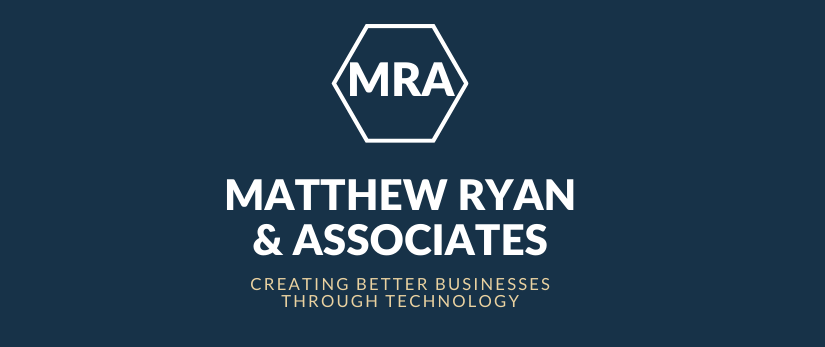The Social Media Quality over Quantity Debate – My Two Cents!
There are several benefits of social media marketing for all organisations. You may want to:
· Be the market leader in your field,
· Build your Brand and Brand reputation,
· Solidify yourself in the market,
· Drive the agenda or conversation,
· Grow leads and sales,
· Increase your audience and reach,
· Enter a new demographic.
Whatever your aim is, what is better, Quality or Quantity?
For those that are trying to measure the ROI of social media marketing, how do they go about getting actual results from their time and effort? In other words, how does a post or tweet translate into business growth for your organisation that is not about being in someone’s face and eyeballs at all times of the day and night?
The value of social media marketing to businesses isn’t just in the ability to promote content to the masses, it’s in the ability to promote quality content that builds a community and virtual following over time.
It is also in the ability to influence your target audience behaviour by getting your audience to engage and interact with you. So, while it’s good to be active on social media and post moderate and measured amount of content, do you need to post at every hour, every day or every other day or even once a week?
For me the key to driving traffic to your organisations sales methods is driving and getting your target audience to interact and then convert.
So, in the red corner we have quantity, in the blue corner quality – Boxers Ready – Fight!
Fact 1: Quality content builds trust and a following.
People become social media followers and fans of you and your organisation because they trust that the content provided. It is relevant and comprehendible to them. So when people decide to follow you or become a fan of yours on social media, it’s likely that they saw a few posts of yours they liked before they made that decision.
Your social media posts and tweets contribute to a reputation over time and if you spend more effort on trying to post often without paying attention to the quality and reliability of what you’re posting, they’ll stop listening by unfollowing you or simply ignoring your posts.
This leads to an all-important example about why quality and building a buzz wins every time:
Before it released the new Fiesta, Ford began a broad marketing campaign called the 'Fiesta Movement.' 100 social-media heavyweights were given a European model of the car, having them complete “missions,” and asking them to document their experiences on various social channels. Videos related to the 'Fiesta' campaign generated 6.5 million views on YouTube! When it finally became available to the public some many months later, in late 2010, some 10,000 cars sold in the first six days. 1 McKinsey and Co - Strategic Principles for Competing in a digital age
FACT 2: Quality content is Engaging and shows your authoritative knowledge on a subject.
Social media is meant to be engaging and social (hence the name “social media”) and for organisations, more engagement on social media can translate into increased brand awareness, higher traffic to your site and more prospects in your marketing funnel.
As you build trusted followers in your online community and give them quality content that’s relevant to them, you’ll see an increase in people viewing, liking and sharing your posts.
But posts without the qualities that people like and share won’t engage anyone, won’t build your brand and won’t drive traffic back to your site and into your marketing funnel.
Researching your target market is key, engaging with your targets them at a personal level, not blanketly bombarding them works every time:
Levi Strauss (the jean company) as an example has used social media to offer location-specific deals. In one instance, direct conversations with just 400 customers led 1,600 people to turn up at one of the company’s stores— an example of social media’s 'word-of-mouth' effect.
That is another wonderful way to describe the social media conversation - It is an online/digital 'word of mouth'. Do you talk to your friends or colleagues the same way you do on social media? Are you selling to them or having a meaningful conversation with them?
FACT 3: With quality content comes social proof.
Search engines Like Google, Bing, Safari and Firefox all look for quality content. They look at the social signals to help figure out rank. In other words, quality content is now measured in part by how often it is liked and shared on social media. The thought behind this is that if people are liking and sharing it on social media, it must be quality content that people would like to see in their search results as well. But is it really?
Some will say the SEO impact of social signals depends on the search engine, but even if Google doesn’t take social media interaction into account it may still consider posts, shares, tweets and retweets as credible backlinks and we all know how important backlinks, especially authoritative bank links are for our websites and for our social media pages.
Another consideration is that when quality content is shared on social media and it receives lots of engagement such as likes and shares, the chance that others will also engage with that quality content is increased.
Obviously, the more people share a piece of content, the more other people will see it - but most people don’t have time to read and engage with every single piece of content that looks interesting to them.
So when they come across meaningful content on social media that has a large amount of engagement already, that engagement can catch their attention and suggest that it’s going to be quality content that’s worth their time.
So how can you ensure quality when it comes to the content your organisation is posting on social media?
· Consider what your organisation is posting.
· Is its helpful information your target audience wants?
· Is the topic relevant to what your audience is looking for or talking about?
· What are the analytics telling you?
· Not just the likes and shares, but the clicks and conversions too.
Different audiences respond in different ways and what works for one industry may not work for another, but ultimately you want to show that the time and effort you spend on social media marketing is contributing towards your business growth and company goals.
And this is done through quality of what you are saying on social media, not quantity of how often you are posting.
One great lesson that I learn some time ago when creating Marketing plans especially long term Social Media Engagement Plans and strategy that leads to increases in the sales funnel, comes partly from Forest Gump, and Digital Leader Eric Qualman and I quote from his book “Digital Leader - 5 Simple Steps to Success and Influence publish by McGraw Hill.”
Drill Sergeant: "Gump, What's your sole purpose in this army?"
Forrest Gump: "To do whatever you tell me, Drill Sergeant!"
Drill Sergeant: "God Damn It Gump! You’re a Gaddam Genius! That is the most outstanding answer I have ever heard you must have a goddamn IQ of 160!"
Gump then narrates: - "Now for some reason I fit in the army like one of them round pegs, it's not really hard, you just make your bed real neat and remember to answer every question with "Yes Drill Sergeant!"
Erik Qualman: "to achieve and win, Forrest Gump 'demystified his life', whether he did this consciously or subconsciously, he brought each area of his life back to the simplest of forms . Digital Leader - 5 Simple Keys to Success and Influence - Erik Qualman (McGraw Hill)
From this we learn that social media is as simple as a conversation between two people, only now you're not using your voice or phone, it's another media such as Facebook or LinkedIn!
It needs the same care, responsibility, attention to detail and customer service action, as any form of advertising and marketing, customer service or conversation and remember you better make that a Quality based conversation!.

